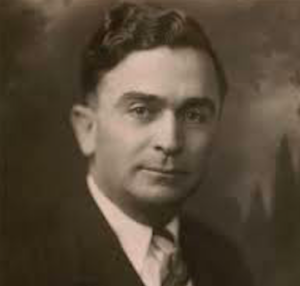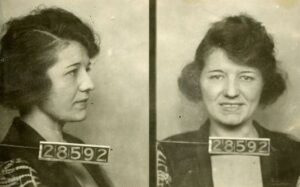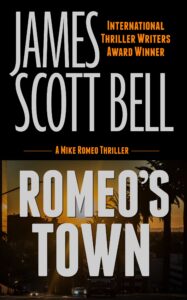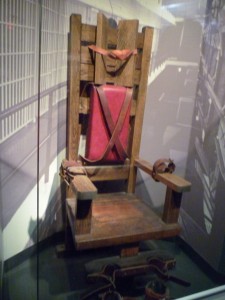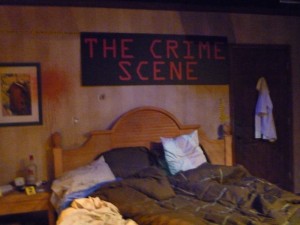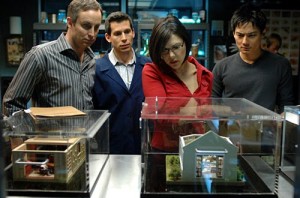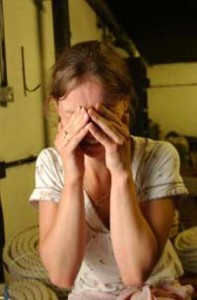by James Scott Bell
@jamesscottbell
 July 12, 1922. It was hot in Los Angeles. A twilight crowd of 5,000 cooled off at the Hollywood Bowl, listening to an eighty-piece orchestra play a bill of popular music under the baton of maestro Albert Hurtz.
July 12, 1922. It was hot in Los Angeles. A twilight crowd of 5,000 cooled off at the Hollywood Bowl, listening to an eighty-piece orchestra play a bill of popular music under the baton of maestro Albert Hurtz.
Downtown at the Alhambra movie house, 500 Angelenos thrilled to the hit of the season, D. W. Griffith’s Orphans of the Storm starring Dorothy and Lillian Gish.
At clandestine speakeasies in Hollywood, couples were tippling gin and dancing the Charleston.
And on a lonely stretch of road in Montecito Heights a beautiful young widow named Alberta Meadows was getting her skull pulverized by a claw hammer.
When police—along with a couple of crime beat reporters—got to the scene, the sight of the corpse made several of them nauseous. The body had been disemboweled and the face was an unrecognizable muck of raw meat. So viciously had that face been smashed that the head of the hammer had broken off.
Who could have committed such a heinous act…and why?
The answer came by way of another tip—from the killer’s husband! It was he who turned in a pert, shapely, former vaudeville dancer named Clara Phillips, age 23.
It seems her husband, a dashing sport named Armour Phillips, had gone into debt chasing the California oil boom. With creditors breathing down his neck, he struck up an acquaintance with the rich and comely widow, Mrs. Meadows. Soon they began, as it used to be said, “keeping company.”
When Clara confronted Armour, he denied any dalliance. She started listening, from an upstairs extension, to Armour’s telephone calls. She heard gossip that Armour had bought Mrs. Meadows a wristwatch and new tires for her car.
The day before the murder, Clara went shopping with her friend, Peggy Caffee. She bought a skirt, a pair of slippers and some stockings. Then they went to a five-and-dime where Clara purchased a claw hammer. She had not yet told Peggy about her suspicions.
She did the next day, Wednesday, July 12. She poured out her heart as the barkeep poured out the gin at a speakeasy in Long Beach. She told Peggy she wanted to talk to Alberta Meadows, so they headed back to L.A. to wait outside the bank where Alberta worked. Around four-thirty, Mrs. Meadows emerged and headed toward her Ford coupé. Clara stepped over. Alberta knew who Clara was, and perhaps not wanting to cause a scene she consented to Clara’s request to drop her off at her sister’s house in a sparsely populated and rugged development northeast of downtown.
Along the way Clara asked Alberta to pull over and please step out of the car to discuss “something.” She confronted Alberta about Armour. Alberta denied any wrongdoing.
Clara pulled out the claw hammer and struck Alberta’s head.
Alberta wailed and started running. Clara caught up with the dazed widow, grabbed her arm, and walked her back to the car. Peggy thought it was all over. Until Clara went back to work on Alberta’s head.
Alberta cried out to Peggy, “My God! Save me! Help me!”
Peggy attempted to intervene. Clara raised the hammer and said, “Don’t interfere, damn you, or I’ll kill you!”
Peggy ran down the road, stopped, and looked back. She saw Clara pounding and pounding and clawing at Alberta’s body, blood “spurting out in gushes.”
Peggy vomited.
After finishing her ghastly work, Clara rolled a big rock over the body. A few minutes later, covered in blood, Clara ordered Peggy into Alberta’s car.
“I’ll do the same thing to any other woman who bothers my husband,” she said. “And if you tell anybody, I’ll kill you.” After dropping Peggy off, Clara drove to her house, walked in and told Armour, “I guess it’s murder. I killed your lover, Alberta.”
She then poured herself a drink and said she’d turn herself in to the police in the morning.
For some reason, Armour convinced Clara to take it on the lam. She agreed. That night they ditched Alberta’s car and got Clara a ticket on a train to El Paso, with a plan for her to cross over into Mexico.
In the morning Armour went to see his lawyer and told him what was going on. The aghast attorney immediately called a well-known L.A. lawman, Undersheriff Gene Biscailuz. He came to the lawyer’s office and Armour told him about his wife’s confession.
Biscailuz notified authorities in Tucson, who nabbed Clara off the train and put her in the hoosegow. A couple of days later, L.A. plainclothesmen and the sheriff of Los Angeles county, Bill Traeger, arrived to bring Clara back. She smilingly obliged, denied knowing anything about the murder, and said her name was really Clara McGuyer.
She was put in a Pullman compartment, with the sheriff’s wife to keep watch.
Little did she know that the lawmen had brought along Peggy Caffee. At one point they brought Peggy into the Pullman and asked her point blank if this was the woman who killed Mrs. Meadows.
“Yes,” a nervous Peggy replied.
Clara said nothing and began to apply some makeup.
By the time they got back to L.A., the press was calling this the most brutal murder in the history of the city. They dubbed Clara Phillips “The Tiger Woman.”
She smiled for all the cameras, even as she was booked at the L.A. county jail.
At the trial, thinking she could charm the jury, Clara Phillips took the stand and swore under oath that it was really Peggy Caffee who bought the hammer and killed Alberta Meadows!
The jury deadlocked on first degree murder, 10-2 for conviction. They unanimously settled on second degree. The judge sentenced Clara to 10 years to life to be served at San Quentin.
But Clara had other ideas.
A man named Jesse Carson—a gun runner and soldier of fortune—had become enamored of the fetching killer. Visiting her in jail, Carson smuggled her a hacksaw blade. Over the space of three nights, Clara sawed at the bars on her window. Then she slipped through, made her way to vent pipe and shimmied down 50 feet to an outcropping where Carson had placed a rope. She went down the rope another 50 feet and climbed over a steel fence into an alley where Carson was waiting for her in his car.
They hid out in Redlands, where Clara bleached her hair. Eventually, wearing dark glasses and a hat, Clara lit out by train with Carson. They got to New Orleans and booked passage for Clara to Vera Cruz, with Carson to follow. Authorities picked up her trail to Mexico, then Guatemala, and finally to Tegucigalpa, Honduras.
There her extradition was held up by some local officials who had fallen for the dimples and charm of the Tiger Woman. Undersheriff Gene Biscailuz, who spoke perfect Spanish, was dispatched with a team to negotiate with the Hondurans. He had with him a reporter for the Hearst-owned Los Angeles Examiner, Morris Lavine. He asked Lavine to meet with Clara and convince her to return. Lavine appealed to her vanity. Instead of running all your life, come back to Los Angeles, get a new trial and prove your innocence—and give the Examiner your exclusive.
The prospect of landing on the front page again did the trick. Clara returned, only to find out that her lawyer had missed the deadline for filing the appeal.
Off to San Quentin she went. In 1933 she was transferred to the new women’s prison at Tehachapi. To pass the time, she started studying dentistry.
Armour, meanwhile, had gotten a divorce and moved east.
In 1935, thirteen years after the brutal slaying, Clara Phillips was paroled. Stepping out of the gates she was greeted by a crowd shouting, “Tiger Woman!” Reporters asked for a statement. Clara said she just wanted to be left alone.
She went to live in San Diego and worked as a dental assistant until 1961. (What a chilling thought that is. “Open wide…wider…”) She then moved to Texas, and finally went to face the Ultimate Judge.
The history of Los Angeles is rife with crime stories like this—brutal, sensational, and often accompanied by a public fascination bordering on celebrity worship (can you say O.J.?)
Little wonder, then, that I keep setting my books in my home town.
What about you? Did the town where you grew up have any sensational crimes? Or at least, something local that had folks talking? How about where you live now?
***
Note: My new L.A. thriller, Romeo’s Town, releases today at a special deal price. (Outside the U.S., go to your Amazon store and search for B09CFTLDKJ. There’s a paperback, too.)

